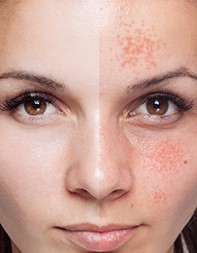Peer Reviewed
Feature Article Dermatology
Facial pigmentation: common causes and how to manage
Abstract
Facial pigmentation may be due to a generalised process but most often is localised to the face. Melasma and actinic damage pigmentation are common and tend to be bilaterally distributed and slowly progressive. Irregularly shaped isolated lesions should be viewed with more caution, and biopsy may be required. Treatments include topical and oral medications, peels, intense pulsed light therapy and laser treatment.
Key Points
- Diagnosis of the type of facial pigmentation can be made on clinical grounds in most cases.
- Facial pigmentation is a cause of considerable psychosocial distress for many patients.
- Melasma, the most common facial hyperpigmentation worldwide, is most prevalent in women and people with constitutionally darker skin. It occurs in approximately 25% of women who are pregnant.
- Hydroquinone-based skin-bleaching preparations remain the gold standard for the treatment of melasma.
- Many patients with facial pigmentation can be managed in the general practice setting but referral for specialist management may be required for refractory cases.
Picture credit: © Whiteshoes911/Depositphotos. Model used for illustrative purposes only.
Purchase the PDF version of this article
Already a subscriber? Login here.

